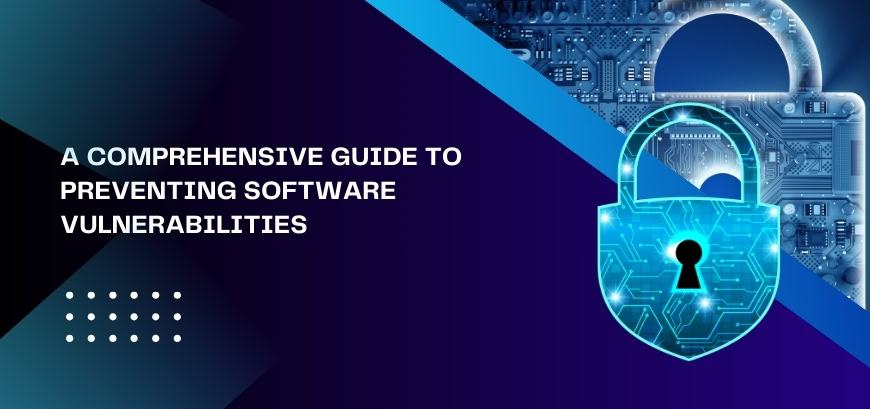In the digital age, software underpins everything from our daily interactions to critical infrastructure. But with this ubiquity comes a growing threat landscape. Malicious actors are constantly innovating, exploiting even the most subtle software vulnerabilities to steal data, disrupt operations, and cause widespread damage. For software architects, the responsibility to build secure applications is paramount. However, traditional patching strategies are no longer enough. This blog equips you with an advanced arsenal of techniques to proactively prevent software vulnerabilities, turning your code into an impenetrable fortress.
Beyond the Patch: Building Security into the Development DNA
The key to preventing vulnerabilities lies in integrating security considerations throughout the entire development lifecycle, not just as an afterthought. This proactive approach, known as Secure Development Lifecycle (SDL), transforms security from a reactive measure to a fundamental principle guiding every step of the development process.
Phase 1: Threat Modeling – Anticipate the Attack
Before a single line of code is written, threat modeling exercises become your war room strategy sessions. Here, you identify potential attack vectors used by malicious actors, such as SQL injection or buffer overflows. By prioritizing these risks, you can make informed decisions about secure design principles from the get-go.
Phase 2: Secure Coding Practices – Arming Your Developers from Vulnerabilities
Empower your development team with advanced secure coding practices. This includes techniques like:
- Input Validation and Sanitization: Rigorously vet all user input to ensure it conforms to expected formats and doesn’t contain malicious code.
- Secure Memory Management: Employ memory management techniques that prevent attackers from exploiting memory allocation flaws to gain unauthorized access or corrupt data.
- Cryptographic Best Practices: Implement robust encryption algorithms for data at rest and in transit, safeguarding user information and system integrity.
Static code analysis tools can further automate the detection of these coding errors, acting as a vigilant second pair of eyes for your developers.
Phase 3: Component Security – Trust but Verify
The security of your application is only as strong as its weakest link. Don’t overlook the potential vulnerabilities within third-party libraries and frameworks you integrate. Here’s what you can do:
- Penetration Testing: Subject these components to rigorous penetration testing to uncover any hidden vulnerabilities that attackers might exploit.
- Software Composition Analysis (SCA): Leverage SCA tools to automate the identification of known vulnerabilities within your chosen libraries, allowing for quick remediation.
- Stay Updated: Proactively monitor security advisories for the components you use and promptly address any discovered vulnerabilities to ensure your application remains a secure fortress.
Phase 4: Secure Design Principles – Building a Secure Foundation
Security should be woven into the very fabric of your system architecture. Here are some fundamental principles to consider:
- Least Privilege Access Control: Grant users only the minimum level of access required for their specific tasks, minimizing potential damage if their credentials are compromised.
- Data Encryption: Encrypt sensitive data both at rest (stored on servers) and in transit (traveling over networks) to render it useless even if intercepted by attackers.
- Secure Communication Protocols: Employ secure protocols like HTTPS for all communication within and outside your application, ensuring data integrity and confidentiality.
Beyond the Code: Building a Security-Conscious Culture
Securing the code itself is just one crucial step. Here’s how to cultivate a security-conscious culture within your development team:
- Security Awareness Training: Invest in ongoing security training for your developers. Equip them with the knowledge to identify and mitigate potential vulnerabilities during coding.
- Code Reviews with a Security Lens: Integrate security reviews into your code review process. Utilize security experts or leverage automated security testing tools to identify and address vulnerabilities early in the development cycle.
- Bug Bounties and Vulnerability Disclosure Programs: Consider implementing bug bounty programs or vulnerability disclosure programs. This incentivizes ethical hackers to discover and report vulnerabilities responsibly, allowing you to patch them before they are exploited in the real world.
You can also read: – Blockchain in Backend: Transforming Security and Data Integrity
Conclusion
Remember, security is an ongoing journey. By adopting a proactive approach to vulnerability management, employing advanced security practices, and fostering a security-conscious development culture, you can significantly reduce the risk of software vulnerabilities and build robust, trustworthy applications. As the threat landscape continues to evolve, so too must your security practices. By staying vigilant and continuously fortifying your code, you can ensure your software remains a secure haven in the ever-changing digital world.
Seeking an Outcome-Oriented Digital Marketing Firm?
Altis Infonet Pvt Ltd is a Web Development and Digital Marketing company with a focus on client servicing through knowledge-based solutions. Our team of experts will help make your digital dreams come true!





